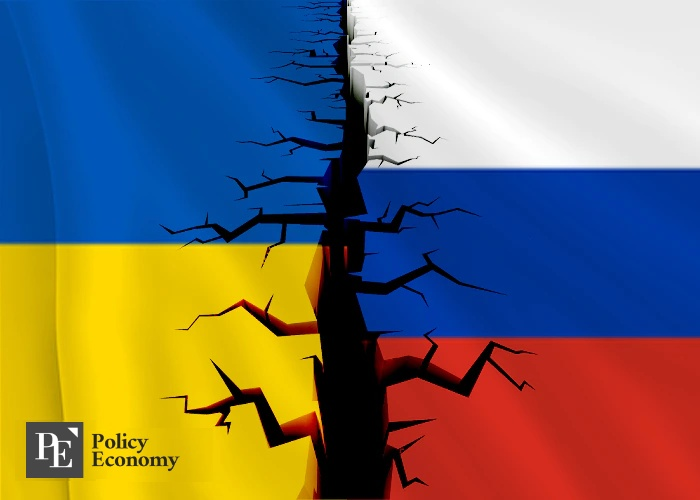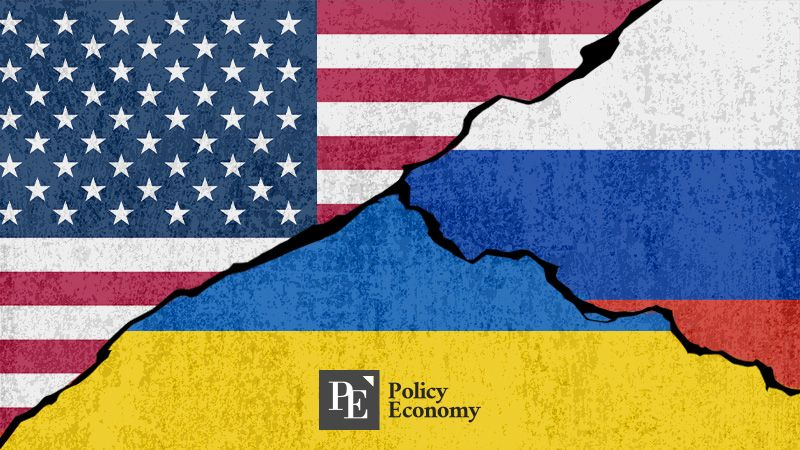Russia and Ukraine Clash Over Donbas — A Repeat of the Korean War?
Input
Modified
Putin: “If Ukraine withdraws from Donbas, the rest of the front will be frozen” U.S. and EU expected to provide security guarantees for Ukraine EU may need to spend $3 trillion over the next decade to maintain security

Analysts suggest the Russia-Ukraine war could conclude in a manner similar to the Korean War—by ceding the Donbas region to Russia in exchange for security guarantees from the United States and Europe.
Putin Demands Donbas Territory as Ceasefire Condition
According to foreign media reports on August 18, Russian President Vladimir Putin met with U.S. President Donald Trump in Alaska on August 15. During the summit, Putin proposed that if Ukraine withdraws from the Donbas region—including the self-proclaimed Donetsk and Luhansk People’s Republics as well as parts of Russia’s Rostov Oblast—Russia would freeze the rest of the front and halt further offensives. In exchange, Moscow offered to return roughly 440 km² of occupied land in eastern Sumy and Kharkiv, while demanding that Ukraine cede about 6,600 km² of Donbas territory still under its control. Since the war began in 2022, Russia has seized about 75% of Donetsk and nearly all of Luhansk.
Russia’s focus on Donbas stems from the region’s strategic value. Western Donetsk is fortified with Ukraine’s so-called “fortress belt,” a line of defenses built around key towns and cities. The Institute for the Study of War (ISW), a U.S. think tank, noted, “Ukraine has poured money and effort into strengthening these fortress belts and building defense industry infrastructure there. For Putin, the Donetsk fortress belt is a major obstacle to further expansion of occupied territory.”

Ukraine’s Security to Depend on the West
If President Putin’s proposal were accepted, Ukraine would likely host Western troops on its soil. Analysts note that if Kyiv ceded Donetsk, Russia could fortify the entire fortress belt, exploit defense industry infrastructure, and eventually restart the war from a far stronger position. This means Ukraine is unlikely to relinquish Donetsk unless its security is firmly guaranteed by Western involvement.
The United States has already begun talks on this front. According to The Wall Street Journal, after his August 15 summit with Putin, President Donald Trump told European leaders that Putin had agreed to allow Western troops to be stationed in Ukraine to ensure the durability of any peace agreement. The WSJ compared the scenario to the 1953 Korean War settlement, which divided the peninsula but left South Korea under the protection of U.S. forces.
However, the scope of U.S. security guarantees remains uncertain. This issue, along with the question of territorial concessions, is expected to dominate the August 18 meeting between the U.S. and Ukraine. Attendees will include President Trump, Ukrainian President Volodymyr Zelensky, European Commission President Ursula von der Leyen, NATO Secretary-General Mark Rutte, French President Emmanuel Macron, German Chancellor Friedrich Merz, and U.K. Prime Minister Keir Starmer.
The Heavy Burden of Military Spending
Even if negotiations move toward Ukraine ceding territory, the problem will hardly be resolved. Western countries guaranteeing Ukraine’s security would face enormous military costs. In February, Bloomberg estimated that the EU could be forced to spend an additional $3.1 trillion over the next decade to secure Ukraine and strengthen Europe’s overall defense posture. Of that, around $175 billion is expected to go toward rebuilding Ukraine’s military, though the final amount would depend on the state of its forces and the territory still under defense at the time of any settlement.
Substantial resources would also be required to boost EU members’ own defense capabilities and budgets. Investments are expected in artillery stockpiles, air defense systems, and missile systems, with the goal of reinforcing the EU’s eastern border, improving rapid deployment, and significantly expanding Europe’s defense industry. Bloomberg added that if the EU turns to bond issuance to finance these measures, NATO’s leading member states could see their debt rise by roughly $2.7 trillion over ten years. On top of this, reconstruction of Ukraine’s war-damaged buildings and infrastructure could cost another $230 billion.





















